The United States Air Force has flight-tested a new 500-pound version of its QUICKSINK anti-ship weapon, releasing the munition from a B-2 Spirit stealth bomber over the Gulf Test Range at Eglin Air Force Base, Florida, on 4 June, according to a press release.
QUICKSINK adapts a standard precision-guided bomb into what the U.S. Air Force Research Laboratory (AFRL) calls a low-cost method for neutralising surface vessels. The lighter 500-pound variant is designed to let combat aircraft carry more weapons per sortie and engage multiple maritime targets at extended ranges, broadening what the service calls its “targeting reach”.
During the demonstration the weapon was dropped by a B-2 assigned to the 509th Bomb Wing, while ground crews from the 393rd Bomber Generation Squadron loaded GBU-38 Joint Direct Attack Munitions modified for the trial.
“QUICKSINK offers an affordable, game-changing solution to rapidly and efficiently sink maritime targets,” said Colonel Dan Lehoski, commander of the 53rd Wing, which oversaw the live-fire event. “AFRL’s 500-pound QUICKSINK variant adds options for the warfighter and enhances operational flexibility.”
The Air Force previously validated a 2,000-pound QUICKSINK weapon during the Rim of the Pacific exercise in 2024. Shrinking the package to 500 pounds gives B-2 crews the ability to mix QUICKSINK rounds with other ordnance, providing combatant commanders with what AFRL calls “an expanded complement of innovative war-fighting solutions”.
Development and testing draw on a partnership between AFRL, the Air Force Test Center and Air Combat Command’s 53rd Wing. “QUICKSINK is the result of a Joint collaboration that rapidly prototyped an affordable concept for holding surface targets at risk,” said Colonel Matthew Caspers, commander of AFRL’s Munitions Directorate. The service describes the programme as part of a wider effort to demonstrate technologies that reinforce American power projection and safeguard freedom of navigation in contested waterways.
AFRL serves as the Department of the U.S. Air Force’s primary scientific research and development centre, overseeing projects across nine technology directorates at forty sites worldwide. Its portfolio runs from fundamental science to advanced prototyping, aiming to deliver affordable capabilities for air, space and cyber forces.
Officials did not release cost figures for the new weapon, but the Air Force has emphasised that QUICKSINK uses commercial-off-the-shelf components and existing bombs, keeping unit prices well below those of dedicated anti-ship missiles while providing a rapidly deployable deterrent against maritime threats.



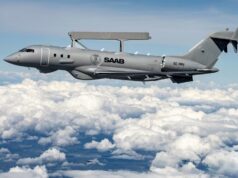
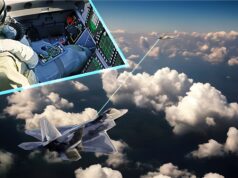
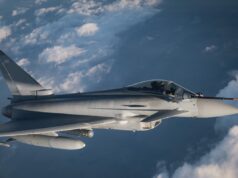
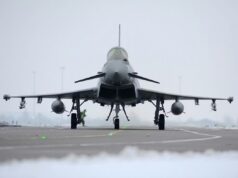
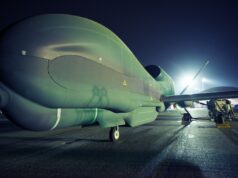

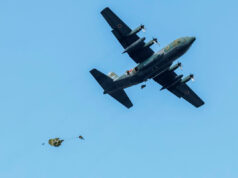


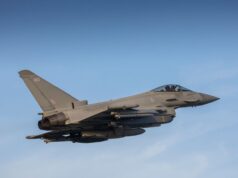

So, how is this different to Paveway IV?
Quicksink uses a fuse/seeker combo where it explodes below the waterline- directly under the ship, breaking its back so it sinks almost immediately, you can see videos on youtube. it spits ships in half like a torpedo exploding under the hull.
Paveway is laser guided, the Quicksinks are just modified JDAMs which currently only have a INS/GPS for guidance. Though you can fitted a laser seeker to JDAM if required. The standard Quicksink JDAM won’t be able to hit a moving target, it will have to be dead in the water. Whereas Paveway will be able to hit a moving target. However from the B2’s standard cruise height, a JDAM can travel nearly 15 miles. Giving the weapon a useable stand-off capability. Paveway can glide, but not as well as a JDAM.
The RAF have used Paveway in live fire exercises against target ships dropped by Typhoons. The Paveway isn’t fused to explode underwater, but will penetrate a lot off decks and does have a variable timed fuse. So it can detonate a second or so after its hit a ship and penetrated a number of decks. The target ship in one of the exercise had its bottom blown out.
In the Quicksink video, they describe the weapon being used against damaged ships, those that are anchored, groups or ships operating in the littorals such those conducting amphibious operations.
Thx. Regarding stand off range I did manage to convince myself that a F-35B could just about launch Paveway from outside say, SeaRam reach but it would be vulnetable to AA missiles as it illuminates the target. It’s a pity the Paveway can’t ‘remember’ the target location and velocity.
Thats not true:
“Quicksink bomb combines the JDAM kit with a new imaging infrared seeker fitted to the nose. The Air Force has said in the past that the resulting munition, which is capable of engaging moving targets, navigates to a designated area first via GPS-assisted INS before switching over to the seeker. The weapon then finds and categorizes the target by checking its length against a detailed internal reference database. This allows it to accurately strike moving targets”
Hmm, that’s interesting as the video I originally viewed on QUICKSINK explicitly said it can’t hit a moving target. The JDAM just had a modified fuze. The video did show an anchored ship being attacked. However, since your comment I’ve looked at the Air Force Research Laboratory (AFRL) website page. Which gives a different story in line with your comment.
The page says the JDAM has a wide open systems architecture (WOSA) seeker fitted to the nose of the weapon. But they don’t describe what kind of seeker it is. I know you can fit a semi-active laser homing (SALH) seeker to JDAM. But the blurb says the seeker can acquire and track the target, additionally none of the videos show the aircraft releasing the weapon lasing the target. So I must presume it will be an optical visual or IR based seeker.
One of the videos on their site, shows the weapon used against a coastal freighter, the images are shown from both the freighter’s perspective and an airborne view. However, it doesn’t look like the ship is moving. The weapon does look like it hits the side of the ship but under water. The result though is pretty catastrophic for the ship, as it literally is cut in half and sinks within seconds.
Looking at the video I originally saw and these ones from AFRL, there is a year and half’s difference. So it looks like the AFRL has developed the weapon to incorporate a seeker that gives an acquiring and tracking capability, after demonstrating the modified JDAM fusing works.
Thanks for providing the update, to what I had presumed.
This is a fantastic development, who would have thought that a $ Billion Dollar plane could be such a economical delivery truck.
(Disclaimer, I used the word “Truck” as it’s often used by Americans to describe a delivery vehicle, it should not be confused with the word Van or lorry)
I think you may be missing the point.
The weapon is cheap so you can have loads of them. The parts are not that specialised so they can be pass produced / converted.
The delivery truck is stealthy so USAF can get away with using them.
“I think you may be missing the point”.
Oh the Irony.
I assume that is attempted irony.
Reckon ?
Quicksink has been demonstrated by other aircraft. But, I can’t imagine a scenario with a B-2 getting close enough to drop a bomb on any ship with a decent radar and defenses.
or F-35b
Would be nice for the RN to get their hands on a few dozen of these for carrier operations!
What the B2 or the modified JDAM?
Surely a Paveway IV with a suitable delay action fuse setting will do the job sufficiently well, based on the point made by Patrick C above? Even if modifications were required I can’t imagine that they would be hugely expensive in order to produce a significant effect, e.g. if the weapon exploded below the ship or if it exploded deep inside the ship, either way it sounds as if the vessel would be in a whole load of trouble. Mission Kill in other words.
Of course, I am thinking in terms of escorts here, fleet aircraft carriers, for example, would likely need to be clobbered multiple times simply because of their size.
The problem is standard off. My guess is that tactically delivering these weapons against a carrier strike groups with fighters and long range SAM cover would pretty risky so you would probably be reaching for a stand off missile. This sounds like it is something you would use against live fighty singletons. Still useful mind.
The US has been arguing that mission kills are not sufficient as they are difficult to confirm in post engagement battle damage assessment. The example I heard mentioned was referring to tanks, if the turret was off its a confirmed kill. At sea, if it ain’t floating its a kill. So perhaps they are thinking of using this to apply the ‘coup de grace’, putting situations beyond doubt. Feasible if you do sufficient initial damage using stand off missiles. Crews can work wonders getting their ships back into action. Grim business…
Cheers CR
For me the question is why note just a standard laser guided bomb… a 500Ib-2000Ib is going to be catastrophic if it explodes pretty much anyplace at all.
I suppose this would knock the ship out of action almost immediately, instead of having to wait for the ship to sink and other systems to go offline as the ship sinks slowly.
Hi Jonathan,
That thought occurred to me as well. HMS Antelope sprang to mind… Sad times.
Cheers CR
It’s interesting that the U.S. are investing in this interesting fusing to break a ships back..essentially to make 500-2000ib bombs more effective..because I was alway under the delusion that if you put a 2000ib bomb into your average modern escort and it exploded that ship was done. When you consider a 15inch shell would contain about 70Ib of high explosive and your average 2000Ib about 1000Ib..its seems to be a lot of effort to put into killing a ship even more…maybe they need to think on the 80/20 rule a bit.
The quicksink is pretty simple and cheap- it installs just like a JDAM kit. standard JDAMs cant hit moving targets, so you need one with a laser seeker- LGBs require an aircraft to lase the target- in the pacific this isn’t always feasible due to the weather, whereas quicksink can use a planes radar to find targets (not effected by weather/fog). it has a dual mode seeker (radar/infrared) no laser. since LGBs require lasing that also means the range will be a bit shorter and the aircraft will have to be closer and remain there constantly lasing the target until it hits… that also means only attacking 1 target at a time since you have to lase it until impact. If a B-2s radar spots a grouping of ships it could launch multiple bombs at the same time.
China has thousands of ships that will be legit targets, not just destroyers and frigates but their ‘maritime militia’ which they use for targeting and could put ASMs or drones on, as well as cargo ships (i doubt even a 2000 lb paveway will do much damage to a massive container ship without special fusing). this will make easy work out of the ships that dont need a LRASM. And as someone else said, anti ship missiles dont always sink the ship they target- we’ve seen ships survive even multiple hits from things like exocet. We know china can quickly repair things, so this can be used to sink even high end targets who’ve already been mission killed.
Besides a blockade, china’s cargo ships will need to be sunk because again, they can hide missiles or drones in those containers or use them to supply amphibious forces.
And I imagine they are testing this on the B-2 so the capability can be quickly added to the B-21 or stealth drones. They’re also flying F-117s at a high tempo now, some spotted with new coatings- so i would not be surprised if they secretly start using those again from smaller airfields in the pacific… Pratt and Whitney just got a 5.5 billion(!) dollar contract for f-117 engine sustainment/upgrades and the USAF is actively looking for people with experience on f-117s.
The beauty of using the B2 in this role, is that it can get significantly closer to a target even when flying at altitude. Although it would probably not carry this number, a B2 can carry 80 500lbs JDAMs. Or in this case substitute them for the Quicksink version of JDAM.
Totally different situation.
WW2 ships were rigid with thick plating that contained the blast.
Modern ships will bend and deflect absorbing the energy and not just concentrating and transmitting it.
If you explode a missile in a modern ship the effects are very different. You might blow out a localised hole, which could be quite big, but that won’t sink it and would probably not mission kill it. It almost certainly wouldn’t sink it even if you broke it in half.
A 15” shell is, of course, supersonic. And depends a lot on the kinetics and then the containment of both the shell case and then the compartment.